Remember those magical mornings when you’d dash to the kitchen table, eagerly awaiting that colorful box of breakfast delight? Before nutrition labels became required reading and smartphones captured our attention, breakfast was simpler—it was about cartoon mascots, decoder rings, and that perfect balance of crunch and sweetness in every spoonful. These cereals weren’t just breakfast; they were childhood treasures that somehow vanished from shelves while we weren’t looking, leaving us with nothing but milk-stained memories and the occasional online petition demanding their return.
1. Quisp
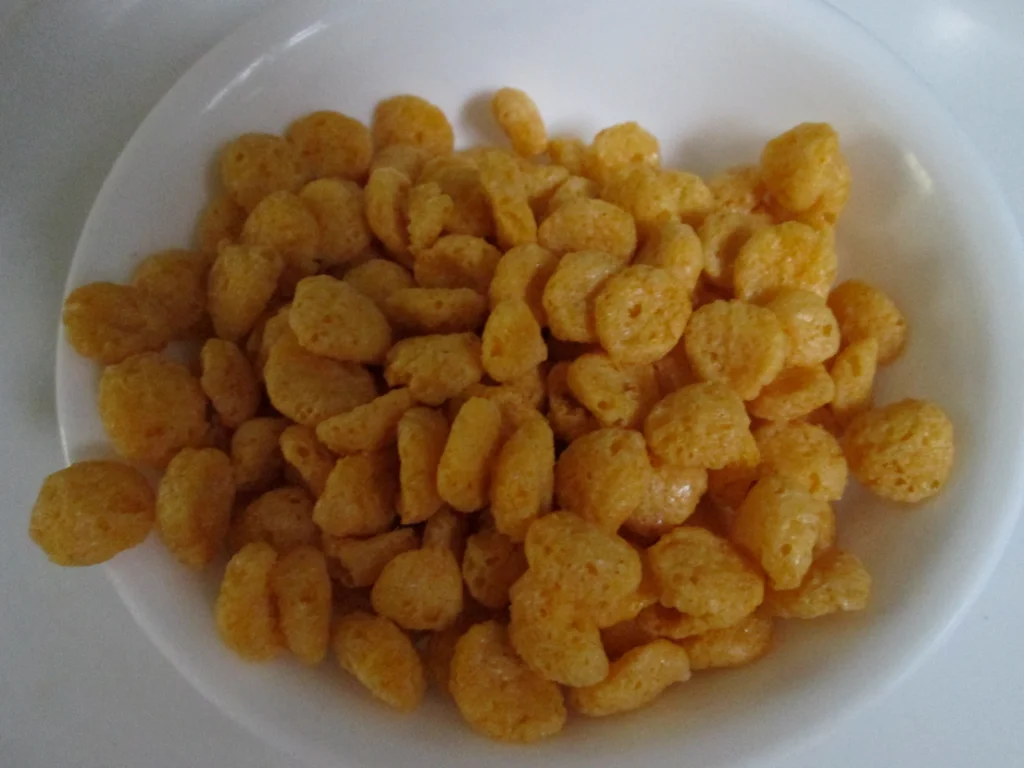
Those flying-saucer shaped corn crisps with the quirky alien mascot captured America’s imagination when they launched in 1965. Quaker Oats marketed this sweet, crunchy cereal with a distinctive propeller-headed alien who spoke in a high-pitched voice created by legendary voice actor Daws Butler. The cereal’s unique texture gave it incredible milk-resistance, allowing it to maintain its crunch longer than most competitors—a feature heavily promoted in commercials where Quisp would challenge other cereals to “milk duels.” Snack History explores the flavorful connection it has to some other big-name cereals.
Though it maintained a cult following through the 1970s, Quisp gradually disappeared from most national shelves by the mid-1980s as Quaker focused on healthier options. The company conducted a famous “election” between Quisp and its sister cereal Quake, with Quisp winning but ultimately failing to maintain widespread distribution. While occasionally revived for limited runs and still available in some regions or online, Quisp’s heyday represents a time when breakfast cereal was about fun and fantasy rather than fiber and reduced sugar.
2. Freakies
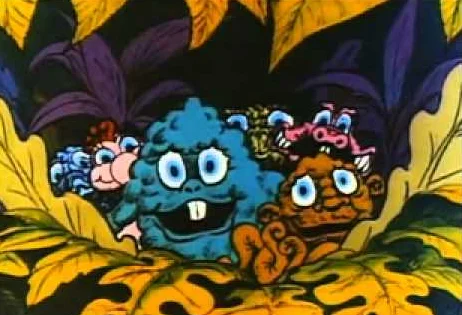
Introduced by Ralston in 1972, Freakies featured seven colorful monster mascots—each with distinct personalities—who lived in their magical “Freakies Tree.” The sweetened oat and corn cereal wasn’t particularly revolutionary in flavor, but the imaginative backstory and characters—BossMoss, Snorkeldorf, Cowmumble, Gargle, Grumble, Goody-Goody, and Hamhose—created an immersive world that children eagerly followed. The marketing genius included trading cards, story booklets, and even vinyl records that expanded the Freakies universe beyond the breakfast table. CBS News remembers this particular cereal as one tasty fever dream that’s still cereal to think about today.
By 1977, the original Freakies were replaced with less popular “space Freakies,” signaling the beginning of the end for this beloved brand. Changing consumer preferences and the rise of licensed character cereals from television and movies pushed Freakies aside, despite several attempted revivals in the 1980s and early 2000s. The cereal’s dedicated fan base still maintains websites and forums celebrating the original seven characters, proving that sometimes a cereal’s cultural impact outlasts its shelf life.
3. Buc Wheats
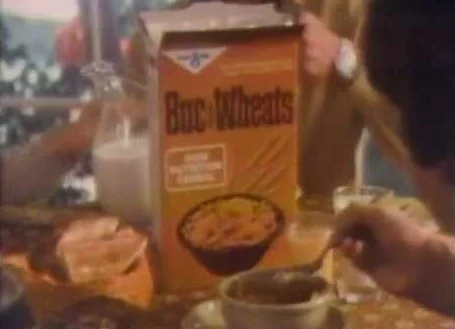
Launched by General Mills in 1971, Buc Wheats combined the emerging health consciousness of the 1970s with the sweetness kids demanded in their breakfast bowls. The toasted whole wheat flakes were coated with a maple-flavored frosting, creating a perfect compromise between parents concerned about nutrition and children seeking morning sweetness. The pirate-themed marketing, complete with a buccaneer mascot and treasure hunt promotions, made healthy eating seem like an adventure rather than a chore. History Oasis recounts how helpful this cereal’s flavor was for it gaining traction as more and more brands entered the grocery shelves.
Despite strong initial sales and positive reviews, Buc Wheats walked the plank by the early 1980s as the breakfast landscape shifted toward more extreme options. General Mills chose to focus on either completely health-oriented cereals or fully indulgent options, leaving little room for hybrid concepts like Buc Wheats. Devoted fans still reminisce about its distinctive sweet-wheaty flavor profile that has never been perfectly replicated in subsequent cereals, making it one of the most lamented discontinued breakfast options among cereal enthusiasts.
4. Sir Grapefellow

This grape-flavored cereal from General Mills made its debut in 1972 as part of an aviation-themed marketing campaign pitting two cereals against each other. Sir Grapefellow featured purple, grape-flavored oat cereal pieces alongside freeze-dried grape-flavored marshmallow bits, creating a uniquely tart and sweet flavor combination. The cereal’s World War I flying ace character—complete with purple mustache and British accent—battled his strawberry-flavored nemesis Baron Von Redberry in commercials that encouraged kids to choose sides in this “breakfast dogfight.”
Despite innovative flavor chemistry that actually delivered a convincing grape taste, Sir Grapefellow never achieved substantial market share in the competitive cereal landscape. By 1974, both Sir Grapefellow and Baron Von Redberry had disappeared from shelves, victims of their own niche appeal and rising production costs for specialized flavors. The short-lived cereal maintains legendary status among vintage cereal collectors, with empty boxes selling for astonishing prices online—sometimes fetching hundreds of dollars from nostalgic baby boomers seeking to recapture a taste of their youth.
5. OJ’s
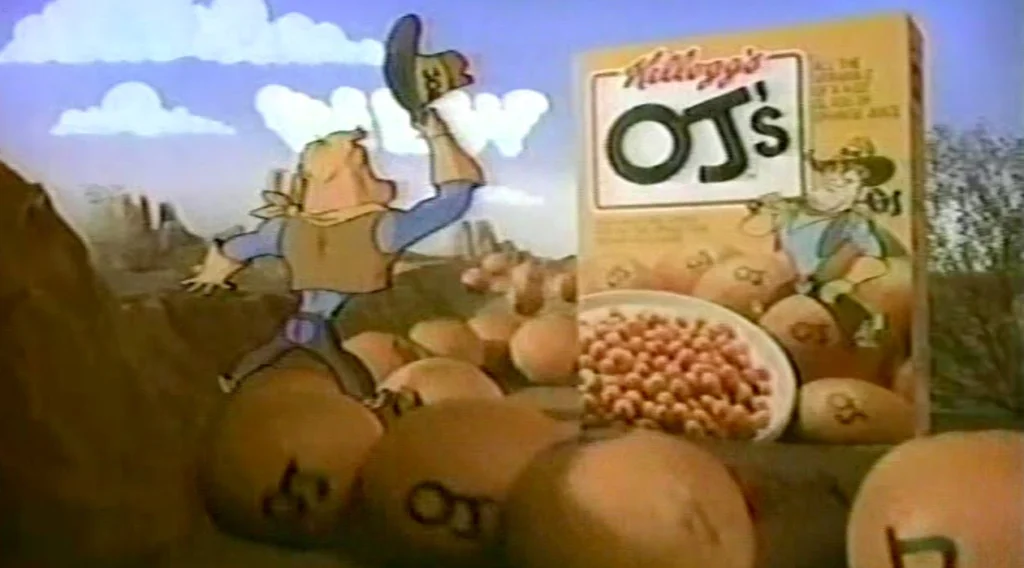
Introduced by General Mills in 1985, OJ’s represented one of the most innovative breakfast concepts of the decade—cereal that tasted like orange juice. Each crunchy O-shaped piece contained actual orange juice concentrate and was designed to be eaten with milk, creating a creamsicle-like flavor experience that was unlike anything else on the market. The bright orange cereal came in a distinctively shaped box resembling a juice carton, making it instantly recognizable on crowded supermarket shelves.
Marketing efforts emphasized the real fruit juice content and vitamin C benefits, positioning OJ’s as a somewhat healthier alternative to purely sugar-laden competitors. Despite strong initial curiosity and decent sales in test markets, the unusual flavor combination proved too experimental for mainstream America’s breakfast tables. By 1987, OJ’s had vanished from most regions, creating yet another “phantom cereal” that many people vaguely remember but can’t quite place—a breakfast innovation that was perhaps ahead of its time in combining beverages and cereals into one convenient eating experience.
6. Grins & Smiles & Giggles & Laughs
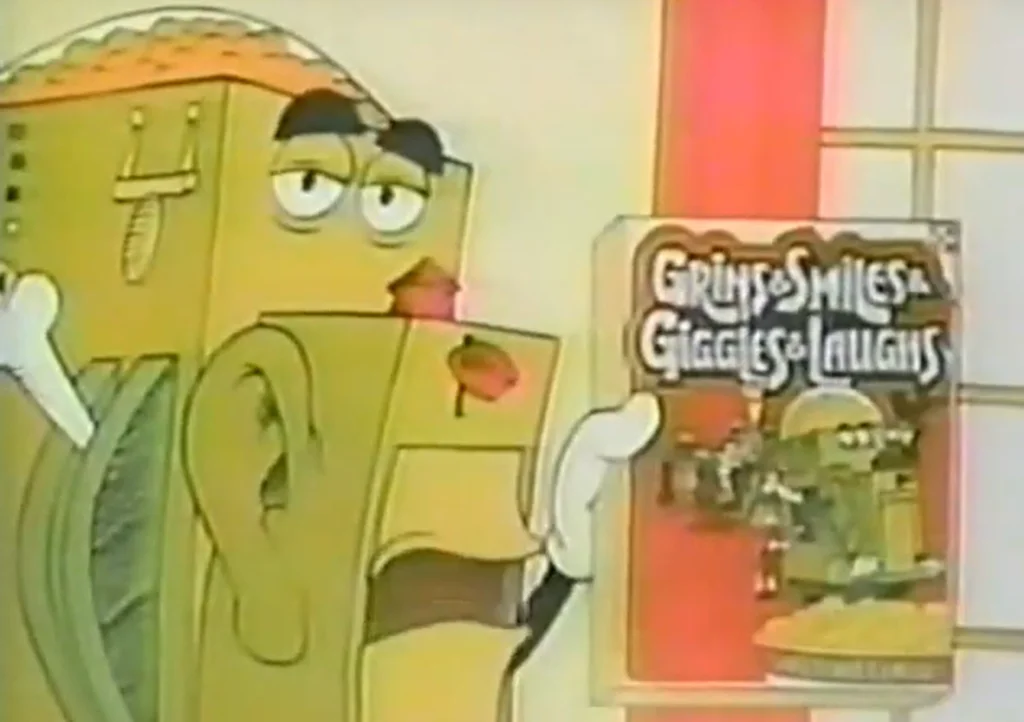
This unusually named cereal from Ralston Purina debuted in 1975 with one of the catchiest jingles in breakfast history and a concept built entirely around positivity. The sweetened corn cereal pieces came in four shapes representing different expressions—grins, smiles, giggles, and laughs—each with a different embossed happy face. In an era of Watergate and economic uncertainty, this cereal promised a moment of joy at the breakfast table through both its whimsical shapes and its fruit-flavored sweetness.
Despite strong marketing and genuinely innovative cereal piece designs, “GSGL” (as fans called it) disappeared by 1977, becoming one of the shortest-lived major cereal brands of the decade. Industry analysts speculate that the complicated production process for creating distinct facial expressions on tiny cereal pieces made manufacturing costs prohibitively expensive. Though brief, its cultural impact lives on in vintage advertising collections and the recollections of those who remember singing along with its memorable commercial melody—proving that sometimes the most fleeting products leave the most lasting impressions.
7. Waffelos
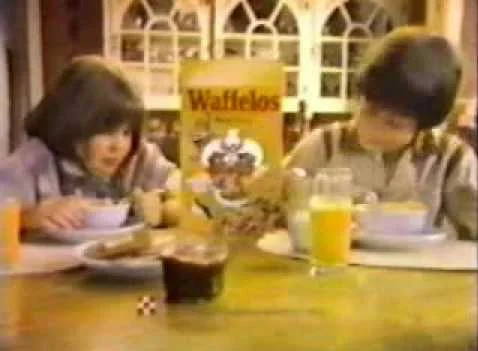
Ralston’s Waffelos, introduced in 1979, brilliantly transformed America’s beloved breakfast waffle into a convenient cereal form. The maple-flavored crispy waffle-shaped pieces maintained their crunch in milk while delivering the authentic taste of syrup-covered waffles without the mess or preparation time. The cereal’s lovable mascot—a humanoid waffle named “Waffelo Bill”—wore a cowboy hat and spoke with a Western drawl, telling kids to “lasso up some Waffelos” in the memorable television commercials that ran primarily during Saturday morning cartoons.
Despite strong initial sales and positive consumer feedback, Waffelos faced increasing competition from similar concepts like General Mills’ Cinnamon Toast Crunch and the rising tide of licensed character cereals. Production ceased around 1982, though a brief, limited revival occurred in select markets during the early 1990s nostalgia boom. The distinct waffle grid pattern and genuine maple flavoring have made Waffelos one of the most accurately remembered discontinued cereals—even decades later, former fans can precisely describe both its distinctive texture and its sweet-but-not-cloying taste profile.
8. Dinersaurs
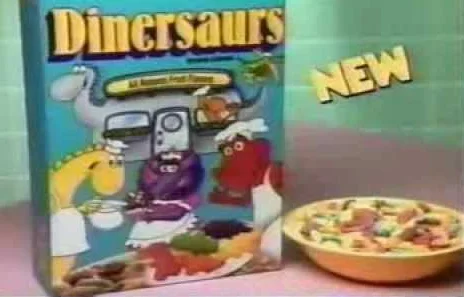
Launched by Ralston in 1988, Dinersaurs cleverly combined the dinosaur craze of the late 1980s with breakfast cereal innovation. Each box contained dinosaur-shaped corn cereal pieces in vibrant colors like red, blue, and yellow—with each color representing a different fruity flavor profile. The cereal’s brilliant marketing concept depicted dinosaurs in 1950s-style diners, creating a whimsical mashup of prehistoric creatures enjoying modern American comfort food.
Television commercials featured animated T-Rex waiters serving up bowls of Dinersaurs while catchy doo-wop music played in the background, appealing to both children’s fascination with dinosaurs and parents’ nostalgia for 1950s Americana. Despite positive consumer reception and strong initial sales, Dinersaurs became extinct around 1990 as Ralston consolidated its cereal offerings and faced increased competition from movie tie-in cereals. Today, the Dinersaurs concept is remembered as one of the more creative themed cereals—combining educational interest in paleontology with playful breakfast fun in a way that few other products managed.
9. Yummy Mummy
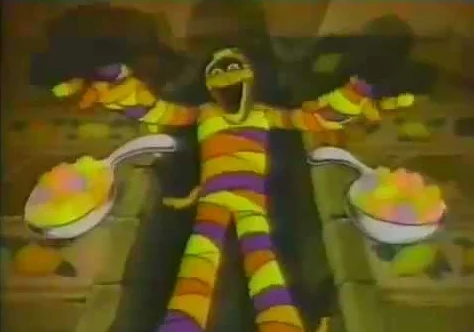
General Mills introduced this monster-themed cereal in 1987 as part of their popular monster cereal lineup that included Count Chocula and Franken Berry. Yummy Mummy featured orange-cream flavored cereal pieces with colorful marshmallow bits, wrapped in the story of a friendly Egyptian mummy with a sweet tooth. The fruity-vanilla flavor profile was specifically designed to appeal to children who found chocolate or berry options too overwhelming, creating a more subtle taste experience.
Despite being part of a successful monster cereal family, Yummy Mummy never achieved the popularity of its monster siblings and was discontinued in 1992, only to be temporarily resurrected in 2013 for a Halloween promotion. Marketing experts suggest that the mummy character lacked the immediate recognition factor of vampires or Frankenstein’s monster, making it harder for children to connect with the brand. The distinct orange-cream flavor, however, maintained a dedicated fan base who still petition for its return each Halloween season—proof that sometimes a cereal’s unique taste can create lifetime loyalty even decades after its disappearance.
10. Hidden Treasures
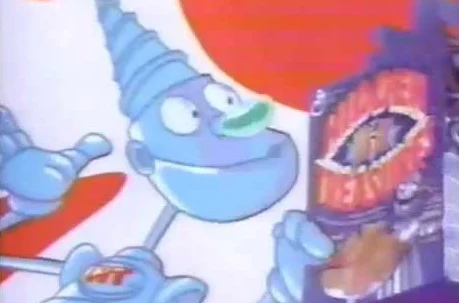
Introduced by General Mills in 1993, Hidden Treasures perfectly captured the treasure-hunting excitement that defined children’s entertainment in the early 1990s. The cereal consisted of pillow-shaped corn pieces, some of which contained fruit-flavored filling centers in cherry, orange, and grape varieties—but since they all looked identical from the outside, each spoonful became a delicious guessing game. The commercials emphasized this surprise element, showing animated children discovering the hidden fruit centers with expressions of wonder and delight.
The innovative manufacturing process that created sealed cereal pieces with stable fruit centers represented a genuine technological achievement in food production. Despite impressive engineering and positive consumer feedback, Hidden Treasures disappeared around 1995, likely due to the complex and expensive production process that made it less profitable than simpler cereal formulations. Former fans often cite Hidden Treasures as the perfect example of interactive food that engaged children with their breakfast—a concept that continues to influence cereal development decades later.
11. Ice Cream Jones
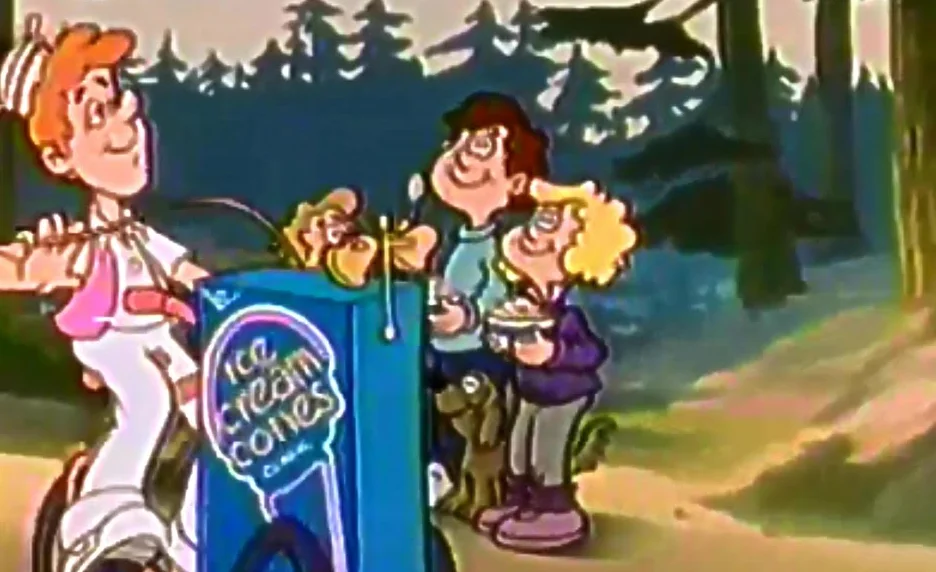
Kellogg’s Ice Cream Jones, introduced in 1977, brilliantly translated America’s favorite dessert into a breakfast-appropriate format. The vanilla-flavored corn cereal pieces were shaped like ice cream cones and delivered a convincing ice cream parlor experience without melting or requiring freezer storage. The cereal’s namesake character—a friendly ice cream vendor complete with white uniform and traditional paper hat—pushed a cereal cart through neighborhoods in television commercials accompanied by the familiar melody of ice cream truck music.
The cereal’s innovative “stays crunchy in milk” formula used a special coating technique that preserved texture while enhancing the vanilla flavor, making it seem especially ice cream-like when cold milk was added. Despite strong initial sales in summer test markets, Ice Cream Jones melted away from shelves by 1979 as health-conscious parents began questioning the appropriateness of dessert-themed breakfast foods. The brief appearance of Ice Cream Jones represents a fascinating moment when the lines between meal categories began blurring—a trend that would eventually become mainstream decades later with the rise of all-day breakfast options and dessert-inspired morning foods.
12. Morning Funnies
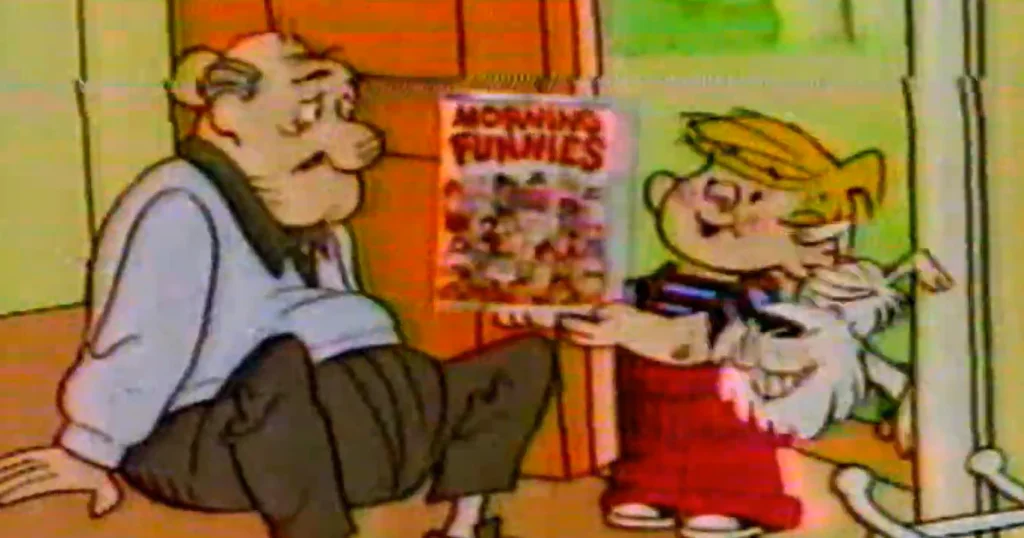
Ralston’s Morning Funnies, launched in 1988, transformed the classic Sunday comics experience into breakfast form through innovative packaging rather than the cereal itself. The actual cereal was a relatively standard frosted corn puff, but each box featured actual comic strips from newspapers printed on the box exterior, creating an entertaining read during breakfast. The licensing agreement with King Features Syndicate brought beloved characters like Beetle Bailey, Hägar the Horrible, and Hi and Lois directly to the breakfast table when newspaper subscriptions were beginning to decline.
Television commercials showed animated comic strip characters literally jumping from the funny pages onto Morning Funnies boxes, emphasizing the official connection to these beloved cultural icons. Despite clever marketing and the genuine appeal of reading comics while eating, Morning Funnies disappeared around 1990 as licensing costs increased and competitors developed more interactive box-back activities. The concept of Morning Funnies lives on as perhaps the most literal interpretation of “breakfast entertainment”—directly combining reading material and morning nourishment in one convenient package.
Those glorious technicolor cereals of yesteryear didn’t just fade away because of changing nutritional standards or manufacturing costs—they represented a distinct cultural moment when breakfast was the most magical meal of the day. Today’s grocery aisles may boast more fiber and less sugar, but they’ve lost something intangible that went beyond ingredients—that sense of wonder that came from prizes buried in sugar-dusted treasures. While we might not be able to recapture the exact flavors of these vanished breakfast icons, their legacy lives on in the collective memory of anyone who ever started their day with a cartoon-covered box and a prize that was absolutely worth digging for.


